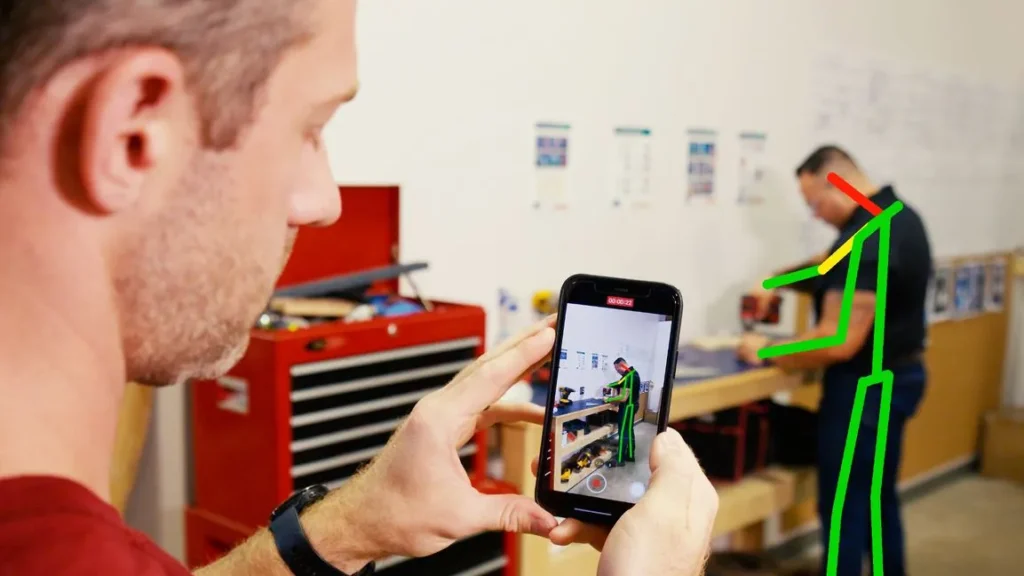By Kelly Wernette-Leff, MS, AT, ATC
Employees in the industrial and manufacturing industries today are expected to easily handle the fast-paced and demanding work while balancing a safety-first mindset. Truthfully, that’s a big ask of employees as they work a busy shift, and many employees end up developing musculoskeletal disorders (MSDs) from repetitive tasks, awkward postures and handling heavy materials.
This is where implementing a simple, yet comprehensive software system can have a massive positive impact. VelocityEHS Industrial Ergonomics accurately evaluates and quantifies the physical demands imposed on the industrial employee, in just minutes. Using sensorless motion capture technology, the software can identify and highlight the areas of highest MSD risk on the body from a simple video recorded with a mobile device.
Recording Guidelines for Motion Capture
Before recording the employee performing the job to be evaluated, make sure that you have their permission to be recorded. (Privacy options are available if the operator would prefer, such as face or body blurring when the video is processed in the software.)
When filming, only one operator should be in the frame and centered to include all parts of the body. You may need to zoom out, or back up a bit, to ensure that all the operator’s movements stay in the frame; you can also move around the operator as they perform the task – as long as you can do so safely. You want to ensure that you’re recording the operator’s side profile to capture them bending forward and backwards. All the operator’s zippers should be zipped, all buttons buttoned, and any loose clothing removed to obtain the most accurate results with the assessment.
Only have one operator in the frame and ensure that all body segments being evaluated are in the frame as well. This may mean stepping back or zooming in – the more detail the video can get, the more accurate the results. Record from whichever side of the operator best represents the risk to the body, and record at least 30 seconds of the job task and no more than 2 minutes.
Minutes Later…
Then, the user simply finds the file in their device and selects to upload it to VelocityEHS Industrial Ergonomics. It can also be uploaded to a shared drive, airdropped to a computer or shared through a file transfer cable to be processed (uploading from the device is the preferred method). The file should not be emailed, as this decreases the quality, which may cause errors in the assessment. The device’s screen must remain open and unlocked while the video is uploading. If the device’s screen locks, it will interrupt the upload and need to be uploaded again.
Once the file has successfully uploaded, the video will process in the software, and in a matter of minutes, the results of the MSD risk assessment will be available. The results of the assessment will appear with a numeric score and color-coding to show which factors add to the greatest level of MSD risk, along with specific suggestions for making improvements to reduce the level of MSD risk.
